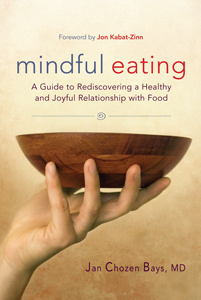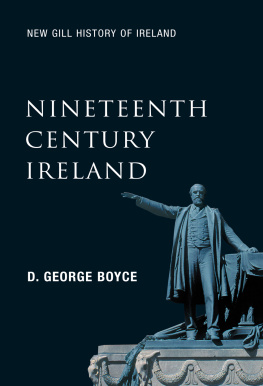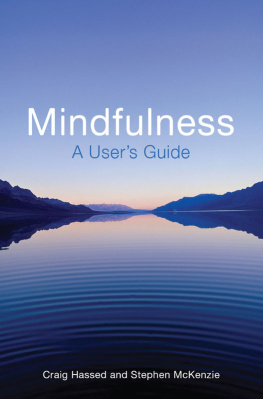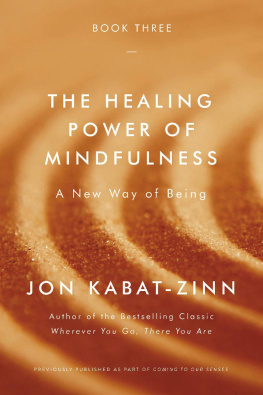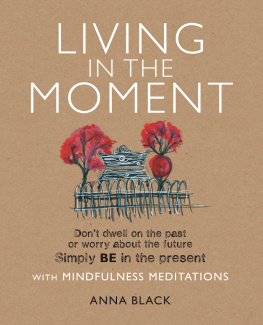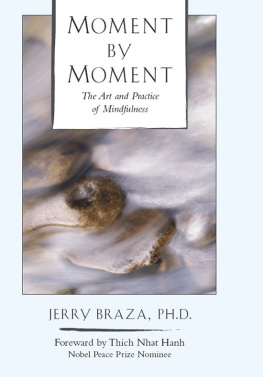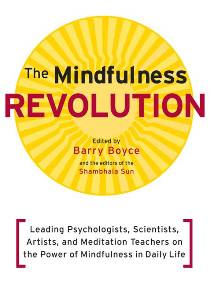
THE
MINDFULNESS
REVOLUTION
Leading Psychologists, Scientists, Artists,
and Meditation Teachers on the Power
of Mindfulness in Daily Life
Edited by Barry Boyce
and the editors of the Shambhala Sun

| SHAMBHALA Boston & London 2011 |
Shambhala Publications, Inc.
Horticultural Hall
300 Massachusetts Avenue
Boston, Massachusetts 02115
www.shambhala.com
2011 by Barry Boyce
Cover design by Jim Zaccaria
All rights reserved. No part of this book may be reproduced in any form or by any means, electronic or mechanical, including photocopying, recording, or by any information storage and retrieval system, without permission in writing from the publisher.
Library of Congress Cataloging-in-Publication Data
The mindfulness revolution: leading psychologists, scientists, artists, and meditation teachers on the power of mindfulness in daily life / edited by Barry Boyce and the editors of the Shambhala Sun.1st ed.
p. cm.
eISBN 978-0-8348-2739-4
ISBN 978-1-59030-889-9 (pbk.: alk. paper)
1. Cognition. 2. Awareness. 3. Perception. 4. Experience.
I. Boyce, Barry Campbell, 1956 II. Title: Leading psychologists, scientists, artists, and meditation teachers on the power of mindfulness in daily life.
BF311.M55355 2011
294.34435dc22
2010036652
To prepare an anthology on mindfulness naturally requires at least a little bit of mindfulness, so I want to express my deep gratitude to the many teachers who helped me discover it, including in particular Chgyam Trungpa Rinpoche. I also want to thank the many authors included in this book for being so reasonable and helpful in bringing it to fruition.
I want to thank my colleagues at the Shambhala Sun Foundation for all their help in making this book possible. Editor-in-chief Melvin McLeod has provided immeasurable guidance every step of the way. My lifelong friend and colleague, publisher James Gimian, is an ever-present strategic thought partner. Andy Karr kicked around many ideas with me that helped to shape the content. Editors Andrea Miller and Liam Lindsay brought a can-do attitude to this endeavor that made it a joy to show up for work.
Thanks to my many friends and guides at Shambhala Publications, foremost among them Eden Steinberg, whose intelligence and care helped bring this book the focus and flow it needed. I continue to rely on the friendship and support of Peter Turner, president of Shambhala, and vice president Jonathan Green.
Thanks finally to my wife, Judi, who provided countless hours of help in pulling details together and who waited for me many nights when this book made me very late for dinner.
Anyone Can Do It, and It Changes Everything
Mindfulness. Its a pretty straightforward word. It means the mind is fully attending to what is at hand, what youre working on, the person youre talking to, the surroundings youre moving through. It is a basic human capacity. Its not a talent. We all have it. We all need it. And yet, it is so often elusive. Our mindfulness can slip away from us in an instant, and we are lost in distraction or engrossed in obsessive thoughts or worries about the future. Even in the midst of the intense pain that can come from an injury, illness, or lossas much as such moments seemingly captivate our attentionmindfulness can fade so that we become more caught up in our inner story than what we are actually experiencing.
Given that its so easy for us to stray from our awareness of the present moment, mindfulness long ago became a discipline. By taking time away from the pressures and needs of daily life to work only on mindfulness, with no other project at hand, we refresh our ability to be mindful when we return to our everyday activities: taking care of a household, raising children, working, exercising, playing sports, volunteering, and so on. This practice has often been called meditation, but since that term also covers a number of other types of practices, we use the term mindfulness as shorthand for mindfulness meditation practice.
This book is about how to engage in that practice, which anyone can do since the only requirement is to pay attention to your breath and your body. This book is also about how just taking part in this simple practice can enhance all areas of your life anddare I saychange how you approach life. Its not necessarily a monumental change; its more a small shift that can make a difference day in, day out. As one new practitioner put it, My mindfulness practice provides me with a way to observe the stressful situations around me and not become caught up in them. It has taught me how to pause, and then in that moment, I can make the choice whether to respond or react to whats going on.
Historically, the most prominent practitioner was the Buddha, and mindfulness became the basis for the spiritual tradition that bears his name. The practice existed in various forms in southern Asia prior to his time, and it seems likely that similar forms of practice focusing on an awareness of body and mind in the present moment have existed in many cultures. In the last thirty years, the practice of mindfulness has been taught as a secular discipline detached from any involvement in Buddhism or any other faith tradition. It can be practiced equally by people of any religious faith and those who have no religious faith, based as it is on fundamental mental and physical capabilities that all human beings have, irrespective of any ideological views they may hold.
The pioneer in establishing mindfulness as a secular discipline is Jon Kabat-Zinn. In 1979, Kabat-Zinn, trained as a molecular biologist at the Massachusetts Institute of Technology, had been a yoga and meditation practitioner for many years. He took some time off from his job in the gross anatomy lab at the University of Massachusetts (UMass) Medical Center in Worcester to do a meditation retreat. It occurred to him while he was practicing that hospital patients could use some mindfulness. It was one of those so-obvious but so-brand-new realizations that happen to scientists in labs every day: take the mindfulness to the hospital because thats where the pain is.
In the early years, the Mindfulness-Based Stress Reduction (MBSR) program he founded was modest. His sessions were held in a basement. He taught mindfulness and related techniques in a program of eight weekly two-hour classes and one daylong session that included paying attention to breathing, eating, stress in the body, communication, and caring. This eight-week program continues to this day with small variations. In 1990, Kabat-Zinn put out his first book, Full Catastrophe Living, which contained detailed descriptions of and instructions for all facets of the program he had developed in his stress-reduction clinic at UMass. It spurred a lot of interest. In 1993, Bill Moyerss documentary Healing and the Mind featured ordinary folks practicing at the clinic, and inquiries soared. So it was no surprise that Kabat-Zinns second book, the shorter and more poetic Wherever You Go There You Are, became an immediate best seller when it was released in 1994. This was the beginning of what we now can call the mindfulness revolution.
An umbrella organization called the Center for Mindfulness in Medicine, Health Care, and Society exists to chart the course of MBSR. The center does not exert any strong control on how mindfulness, a practice that cant be trademarked, spreads around the world. It does, however, ask that people respect the integrity of the MBSR program itself, and if they create a variation of it, that they give it another name. Many variations have sprung up, including Mindfulness-Based Childbirth and Parenting, Mindfulness-Based Cognitive Therapy, Mindfulness-Based Eating Awareness Training, and Mindfulness-Based Art Training for Cancer Patients, to name just a few. All of them combine a mindfulness component with preexisting ways of helping people who have particular problems and ailments.
Next page
